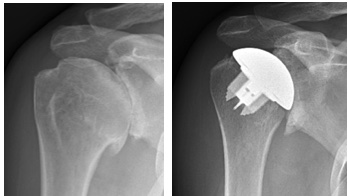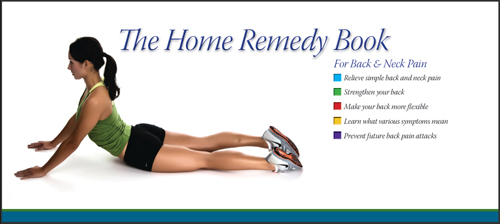- Locations
- Find a Physician
- By Physician
- By Department
- The Center for Spine Health
- Hand & Wrist Center
- Shoulder & Elbow Center
- Foot & Ankle Center
- Joint Replacement Center
- The Sports Medicine Center
- Pediatric Orthopedic Center
- Trauma & Fracture Center
- Osteoporosis and Bone Health
- Oncology Center
- Cartilage Repair Center
- Concussion Rehab Center
- OrthoDirect
- Careers
- Patient Portal
- Intranet
Ream and Run for Shoulder Arthritis
The ream and run procedure is a type of joint replacement for highly motivated active individuals with shoulder arthritis who wish to avoid the potential risks and activity limitations associated with the plastic (polyethylene) socket that is use to resurface the glenoid in traditional anatomic total shoulder replacement.

Anatomic total shoulder replacement with plastic (polyethylene) socket.
 In the ream and run procedure the arthritis humeral head (ball of the shoulder ball and socket joint) is replaced with a smooth metal prosthesis that is fixed to the humerus. Traditional humeral replacement involved a stemmed implant. Many current humeral replacements are stemless.
In the ream and run procedure the arthritis humeral head (ball of the shoulder ball and socket joint) is replaced with a smooth metal prosthesis that is fixed to the humerus. Traditional humeral replacement involved a stemmed implant. Many current humeral replacements are stemless.
The bone of the arthritic socket is reamed to the desired curvature and the raw bone surface is allowed to heal as the patient exercises the shoulder.
During the recovery a biological surface forms on this surface. Success requires technical excellence of the surgery and a steadfast commitment by the patient to carry out the exercise and rehabilitation program.

Frequently asked questions:
Who should consider ream and run surgery?
Surgery for shoulder arthritis should only be considered when the arthritis is limiting the patient’s quality of life and after a trial of physical therapy and mild pain medications. Sometimes non-operative management is successful. Severe arthritis is best managed with joint replacement surgery, either total shoulder or ream and run. The ream and run procedure is considered for patients who are highly motivated to put in the substantial time and effort that is required for the recovery and rehabilitation. The recovery is more difficult than the recovery after anatomic total shoulder replacement. The ideal patient is healthy, active, and committed to work diligently to achieve a shoulder reconstruction that does not require a plastic glenoid component. The recovery can be painful, difficult and lengthy.
Who should probably not consider ream and run surgery?
The procedure is unlikely to be successful in patients with rheumatoid arthritis, severe depression, rotator cuff deficiency, severe chronic pain issues.
What are the keys to success of ream and run surgery?
Success requires experience and technical excellence of the surgeon and a steadfast commitment by the patient to the exercise program until the desired range of motion can be achieved comfortably. The rehabilitation must start immediately after the surgery and performed even when there is pain. Attaining and maintaining at least 145 degrees of forward elevation motion is critical to the success of the procedure. The shoulder may improve for up to 2 years after surgery.
Useful references
1. Matsen FA 3rd, Carofino BC, Green A, Hasan SS, Hsu JE, Lazarus MD, McElvany MD, Moskal MJ, Parsons IM 4th, Saltzman MD, Warme WJ.Shoulder Hemiarthroplasty with Nonprosthetic Glenoid Arthroplasty: The Ream-and-Run Procedure. J Bone Joint Surgery Rev. 2021 Aug 25;9(8). doi: 10.2106/JBJS.RVW.20.00243.PMID: 34432729
2. Levins JG, Passarelli E, Adkins J, Molino J, Henry H, Paxton ES, Green A: Early Outcome of Humeral Head Replacement with Glenoid Reaming Arthroplasty (Ream and Run) for Treatment of Advanced Glenohumeral Osteoarthritis. J Shoulder and Elbow Surgery 2022. doi: 10.1016/j.jse.2022.01.152.








